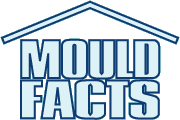Residential Air Quality Testing
With winter temperatures dropping way below the freezing point, we're spending most of the time indoors. However, rarely do we think about indoor air-quality and the impact it can have to our families' health. It's well known that poor indoor air-quality can cause or aggravate asthma, headaches, chronic fatigue and insomnia.
To ensure your family is not exposed to high levels of indoor biological or chemical pollutants, perform air quality testing. In this short article, we're going to see how one can test for airborne mold spores in their homes.
Air Quality Testing For Mold
Testing air for mold is very simple and does not have to be expensive. A homeowner or property manager can save money if they could initially test the air themselves before calling in a professional. This does not mean that a professional is not required but should only be hired to resolve complex problems not simple air testing.For most people, "Self-Testing" (using the same tools used by professionals) in areas of concern is all they need to identify if mold is present in excessive amounts.
When Do You Hire A Professional?
If the air test results show excessive amounts of airborne spores, you may consider hiring a professional to conduct further investigation and:
- determine where the mold is located
- determine the extent of mold growth
- based on where the mold is located and extent of mold growth, determine the best and safe way to remove the mold.
You may also hire a professional if the air testing results show insignificant amounts of airborne mold spores and you or your family is sick and you suspect the cause could be the indoor air quality.
Instructions for Testing Air For Mold Like a Professional
Air testing begins with the collection of at least one volumetric air sample from the outside and one or more interior volumetric air samples from what we call the 'areas of concern (AOC).The volumetric air samples are be collected with an air pump to which a special kind of filter cassette is attached. The pump's "flow-rate" is set ("calibrated") to draw a specified volume of air - for a specified length of time (usually 5 or ten minutes) - through the filter. The sample is later examined in the laboratory under high magnification to identify and count mold structures - dead or alive. This is important as dead ('non-viable') mold spores can cause allergy problems, too.
We all know that molds are a normal part of our world...both inside and outside our homes and structures. And, as most buildings are ventilated with outdoor air...anything contained in the outdoor air can get inside - including dust, pollutants, pollens...and mold spores.
Therefore, the 1st air sample is collected outside the structure or residence to determine the 'normal' mold spore counts in the air outside.
The 2nd air sample is taken indoors, in the 'area of concern.' From a minimum of two samples we can make a comparison between the outside air and the inside air.
Why Is This Comparison Important? When the laboratory receives the air samples the number of collected mold spores is counted. Then the sampling times and the flow rate will be calculated by the laboratory and the result will be the number of spores that are contained in a cubic meter of air.
Volumetric Air Samples may be COMPARED AGAINST EACH OTHER in valid and meaningful ways. And, from these comparisons, valid and meaningful conclusions may be drawn regarding the 'health' of your home.
A normal, healthy indoor environment can be defined as one where:
- Species or types of mold that are found on the inside air sample are also found on the outside air sample - this is referred to as normal 'mirroring' or 'trapping.'
- The number of mold spores found inside should not be greater than the number of mold spores found outside. (The general rule-of-thumb is that INSIDE spore counts should be between 10% and 70% of the OUTSIDE spore count). Also, the types of mold spores present in the inside air should be similar to those found in the outside air. Some types of mold spores when detected inside (and not outside) even in very low levels could indicate a problem.
However:
Doing Your Own Air Testing:
It's fun doing your own air testing and it's easier than vacuum cleaning the carpet or doing laundry.Steps in Air Testing For Mold Spores
The 1st step is to carefully read the sampling instructions that will be sent to you with the RENTED Sampling Equipment.The 2nd step is to determine the 'Areas of Concern.' As experienced Indoor Air Quality Consultants, we start by identifying the 'AOC.' The AOC might be a musty-smelling bath or bedroom, a room where there has been a plumbing problem or roof leak, or in a bedroom where an allergic child sleeps. Indicators are musty smells, deterioration from water damage and of course, visible 'suspect' mold.
The 3rd step is to conduct air sampling in those areas using our easy to use testing system exactly like a professional consultant. For more details, click Mold Testing Kit.
Labels: air quality, air testing, Mold_allergy


